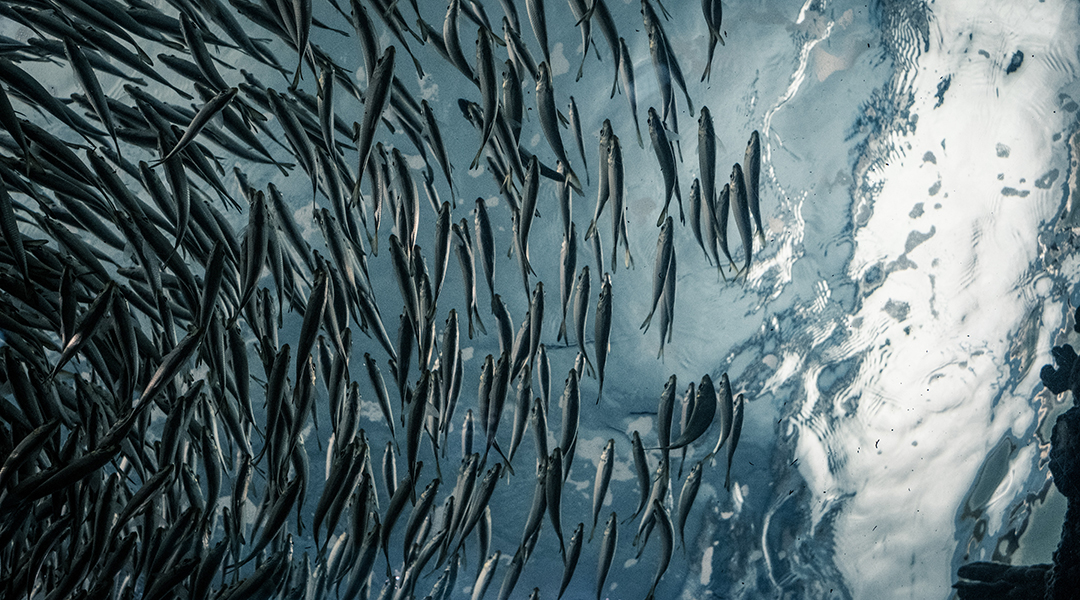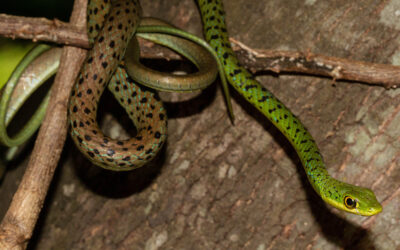“Despite the benefits of learning about the world through social ties, social connections also provide a conduit for misinformation,” wrote a team of researchers in a PNAS study. “Understanding the mechanisms by which information and misinformation spread through groups of individual actors is essential to the prediction of phenomena ranging from coordinated group behaviors to misinformation epidemics.”
Using new computer vision tools, machine learning, and computational modeling, the team led by Ashkaan Fahimipour of Florida Atlantic University and Andrew Hein from Cornell University analyzed foraging coral reef fish in Mo’orea, French Polynesia. They studied the relationship between individual decision-making and misinformation spread in groups of wild coral reef fish, in which misinformation is classified as false predator alarms that can spread contagiously through groups.
“Transmission of information through groups depends on the rules that individuals use to transform the perceived actions of others into their own behaviors,” they wrote. “Because it is often not possible to directly infer decision-making strategies in situ, most studies of behavioral spread assume that individuals make decisions by pooling or averaging the actions or behavioral states of neighbors.”
However, whether individual fish adopt more sophisticated strategies that exploit socially transmitted information while remaining robust to misinformation has remained unknown.
Schools (of fish) shut down misinformation
When wild coral reef fish swim alone or in small groups, they are highly attuned to the behaviors of individuals around them, constantly on alert for any signs of danger. But in large, dense schools, research has found that individuals are more willing to take risks by tuning down their sensitivity to social cues, making them less likely to flee when a neighboring fish does.
The fish feed in dangerous areas with many predators, prompting them to be edgy and skittish, even when predators are not present. The team tracked every individual in a given frame of their videos and reconstructed what each individual saw and the decisions they made in response to different situations.
“When we looked at the features of the model that matched observed behavior, we found that it adjusts the sensitivity of individuals to signals produced by others, based on the past history of what they’ve been seeing,” said senior author Andrew Hein, assistant professor of computational biology at Cornell University.
When there is a lot of visual motion, individuals appear to lower their sensitivity to it, and when there is very little visual motion, they increase their sensitivity, said Hein. “So, they seem to be dynamically adjusting the sensitivity,” he added.
While more study is needed, the paper suggests that the need to cope with misinformation may have driven the evolution of how brains process information.
“Because of its simplicity, and the ease with which it can be implemented in the nervous system, we believe this form of dynamic control of sensitivity may be widespread in biological systems and may have evolved as a simple but robust way of coping with misinformation,” he said.
Reference: Ashkaan K. Fahimipour, et al., Wild animals suppress the spread of socially transmitted misinformation, PNAS (2023). DOI: 10.1073/pnas.2215428120
Adapted from press release published by Cornell University
Feature image: Lance Anderson on Unsplash

















